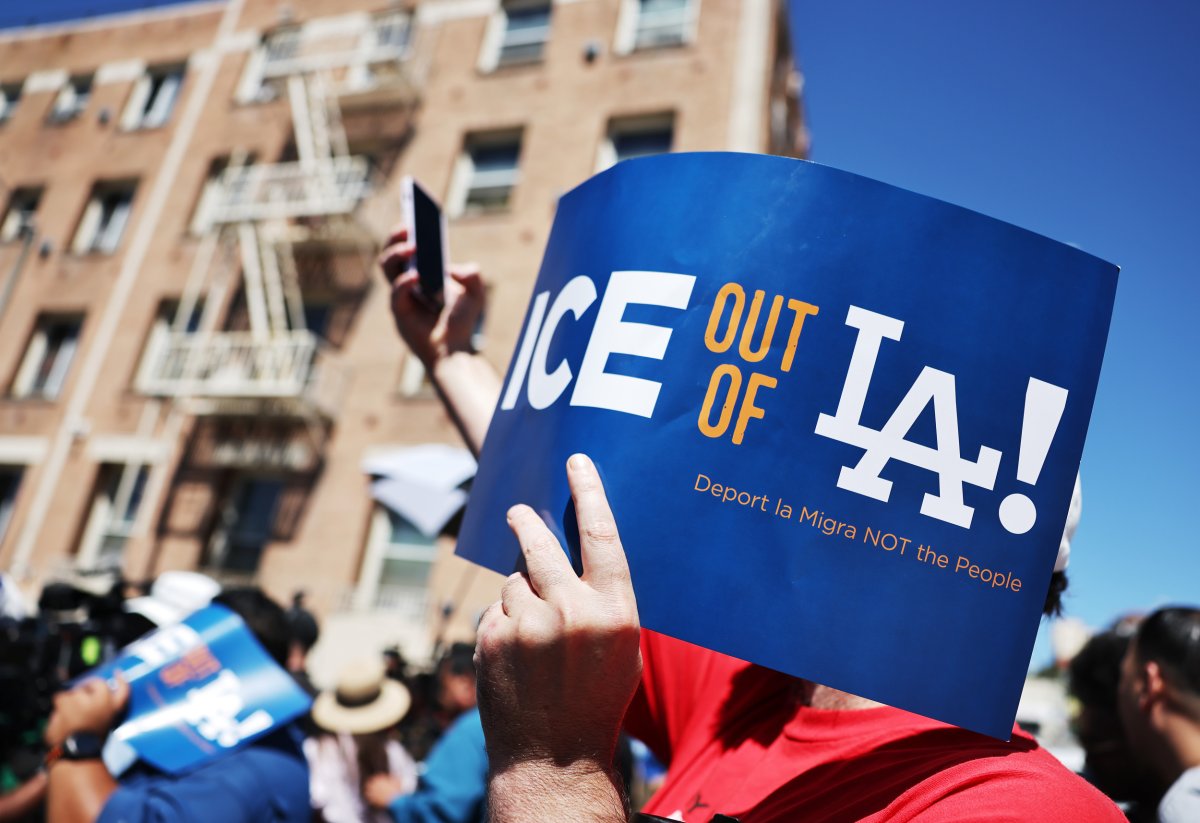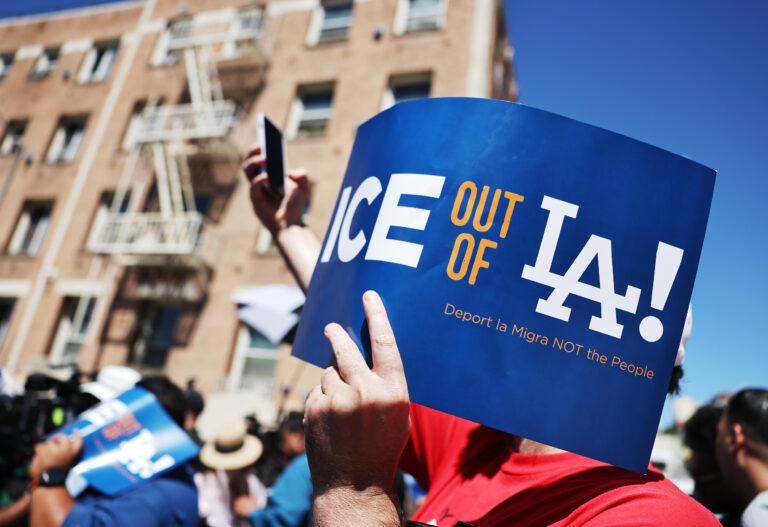The Supreme Court has cleared the way for U.S. Immigration and Customs Enforcement agents to profile millions of Spanish speakers in Los Angeles.
The court’s conservative majority on Monday lifted a judge’s restraining order that had barred federal agents from stopping people solely based on their race, language, job, or location.
Why It Matters
The high court’s 6-3 ruling came in a lawsuit filed by immigrant advocacy groups that accused the Trump administration of systematically targeting brown-skinned people during a crackdown on illegal immigration in the Los Angeles area that began earlier this summer.
It means that federal agents can stop people for questioning based on the language they speak. Spanish is the most-spoken language after English in Los Angeles County, with about 3.46 million in the population speaking it, according to data from the U.S. Census Bureau.

Mario Tama/Getty Images
What To Know
Democratic leaders in Los Angeles and immigrant advocacy groups have condemned the court’s decision.
Armando Gudino, the executive director of the Los Angeles Worker Center Network, said the court had “ruled in favor of racial profiling” and set a “dangerous precedent” for immigrant rights and civil liberties.
Los Angeles Mayor Karen Bass said she has directed city departments to follow rules barring the use of municipal resources on federal immigration enforcement.
“This isn’t just an attack on the people of Los Angeles. This is an attack on every person in this city, and in every city in our country,” she told reporters.
Governor Gavin Newsom, a vocal Trump opponent, said the order would allow agents to stop “U.S. citizens and children, to deliberately harm California’s families and small businesses.”
Immigrant advocacy groups have also taken to social media to warn people to remain on high alert and prepare to document interactions with ICE as enforcement is expected to ramp up from Tuesday.
The Supreme Court’s majority did not explain how it reached its decision, as is often the case with emergency rulings. But Justice Brett Kavanaugh wrote in his concurrence that a lower-court judge had gone too far in restricting how ICE agents carry out brief stops for questioning.
The Department of Homeland Security said on X that federal agents will “continue to FLOOD THE ZONE in Los Angeles” after the high court’s decision.
“This decision is a victory for the safety of Americans in California and for the rule of law,” the post said. “DHS will continue to arrest and remove the criminal illegal aliens that @MayorOfLA is protecting.”
What People Are Saying
Pedro Vasquez Perdomo, a named plaintiff in the case, said in a statement: “When ICE grabbed me, they never showed a warrant or explained why. I was treated like I didn’t matter—locked up, cold, hungry, and without a lawyer. Now, the Supreme Court says that’s OK? That’s not justice. That’s racism with a badge.
“I joined this case because what happened to me is happening to others everyday just for being brown, speaking Spanish, or standing on a corner looking for work. The system failed us today, but I’m not staying silent. We’ll keep fighting because our lives are important.”
California Governor Gavin Newsom said in a statement: “Trump’s hand-picked Supreme Court majority just became the Grand Marshal for a parade of racial terror in Los Angeles. This isn’t about enforcing immigration laws—it’s about targeting Latinos and anyone who doesn’t look or sound like Stephen Miller’s idea of an American, including U.S. citizens and children, to deliberately harm California’s families and small businesses. Trump’s private police force now has a green light to come after your family—and every person is now a target—but we will continue fighting these abhorrent attacks on Californians.”
Homeland Security Secretary Kristi Noem said on X that the court’s decision is “a win for the safety and security of the American people and the rule of law. Our brave @DHSGov law enforcement will continue our operations in LA to remove the worst of the worst criminal illegal aliens that pose a danger to public safety. Make America Safe Again!”
What’s Next
The lawsuit will continue to unfold in California, with a hearing set for September 24.
This article includes reporting by The Associated Press.


